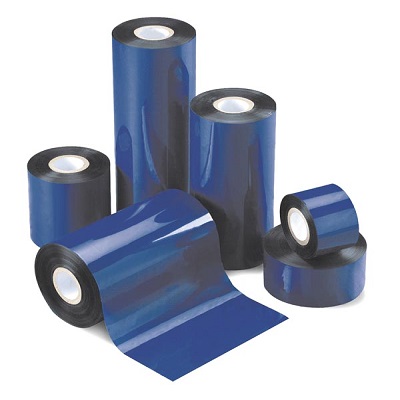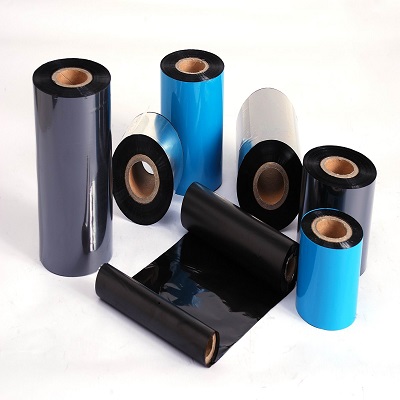Contact Numbers




Thermal transfer ribbon (TTR) is a versatile and cost-effective solution for printing on a variety of materials. It’s used in a variety of industries, from manufacturing to shipping, and can be used to print on paper, plastic, metal, and other materials. In this article, we’ll discuss what thermal transfer ribbon is, how it works, and the different types of applications it can be used for.
The most common type of thermal transfer ribbon is the wax ribbon. Wax ribbons are typically the most affordable option and are best suited for printing on paper labels. The wax ribbon creates a glossy finish, which is perfect for labels that will be exposed to moisture or other environmental factors. Wax ribbons can also be used on fabrics and other materials, but they are not as durable as other types of ribbons.
Another type of thermal transfer ribbon is the resin ribbon. Resin ribbons are much more durable than wax ribbons, and they are best suited for printing on synthetic materials like polyester and nylon. Resin ribbons are also ideal for printing on metals, glass, and other non-porous materials. The downside to resin ribbons is that they are more expensive than wax ribbons and they require a higher temperature to activate the ink.
A third type of thermal transfer ribbon is the hybrid ribbon. Hybrid ribbons are a combination of wax and resin, and they are the most versatile type of ribbon. Hybrid ribbons can be used on a variety of materials, including paper, synthetic fabrics, and metals. They are also more durable than wax ribbons and can withstand exposure to moisture and other environmental factors. The downside to hybrid ribbons is that they are more expensive than wax and resin ribbons.
Wax ribbon is a special type of printing ribbon made from a combination of wax and resin. It is used in thermal transfer printing and is designed to provide a durable and reliable print that can last for years. Wax ribbon is often used in the printing of labels, tags, and other packaging materials.
The wax ribbon is made up of three layers: the top layer is a wax layer, the middle layer is a resin layer, and the bottom layer is the backing material. The wax layer is the most important layer, as it is responsible for creating the image on the paper or other material. The resin layer acts as a binder, holding the wax layer in place and preventing it from smearing or fading. The backing material provides support and helps protect the wax layer from damage.
Wax ribbon is a great way to make your documents look professional and neat. It can be used for a variety of applications, from sealing envelopes to labeling products. In this article, we’ll explain how to use wax ribbon and the different types of wax ribbon available.
First, you’ll need to decide what type of wax ribbon you want to use. There are two main types of wax ribbon: hot wax ribbon and cold wax ribbon. Hot wax ribbon is melted onto the paper or envelope and then allowed to cool and harden. Cold wax ribbon is applied to the paper or envelope using a special applicator. Both types of wax ribbon can be used to create a professional, polished look.
Once you’ve chosen the type of wax ribbon you want to use, you’ll need to prepare your materials. For hot wax ribbon, you’ll need a heat source, such as a candle or heat gun, and a wax applicator. For cold wax ribbon, you’ll need a wax applicator and the wax ribbon.
To apply the wax ribbon, start by laying down the wax ribbon on the paper or envelope. For hot wax ribbon, use the heat source to melt the wax ribbon onto the paper or envelope. For cold wax ribbon, use the wax applicator to apply the wax ribbon. Be sure to press firmly and evenly to ensure the wax ribbon adheres properly.
Once the wax ribbon is applied, you can add any additional decorations you’d like. You can use stamps, stickers, or other decorative items to personalize the documents.
Resin ribbons are an important component of the printing industry. They are specially designed ribbons that are used to print on a variety of surfaces, including paper, cloth, and plastic. They are used to print barcodes, logos, and text on products and packaging. The ribbons are made from a combination of polyester, polyamide, and polypropylene, which are all synthetic materials. These materials are combined to create a durable, flexible ribbon that is resistant to fading, smudging, and tearing.
Resin ribbons are available in a variety of sizes and colors, allowing for a wide range of applications. They are often used in the printing of barcodes, as they are able to produce a clear, sharp image. The ribbons are also used to print text and logos on products and packaging. The ribbons can be used in thermal transfer printers, which use heat to transfer the ink from the ribbon to the surface being printed on.
Wax resin ribbon is a type of ribbon used for printing labels and barcodes. It is made from a combination of wax and resin materials, which helps to provide a high-quality image and a long-lasting print. This type of ribbon is commonly used in a variety of industries, including retail, healthcare, and industrial applications.
The wax resin ribbon is made up of a wax-based layer and a resin-based layer. The wax layer helps to ensure that the print is of a high-quality and is able to withstand a variety of environmental conditions. The resin layer provides a longer-lasting print, as it helps to protect the image from fading and smearing. The wax resin ribbon is also able to print on a variety of surfaces, including paper, plastic, and metal.
Barcode ribbon is a type of material used to create barcodes. It is made of a combination of plastic, paper, and/or fabric, and is used to print barcodes onto labels or other surfaces. Barcode ribbon is an essential part of the barcoding process and is used in a variety of industries, from retail to manufacturing.
The most common type of barcode ribbon is thermal transfer ribbon. This type of ribbon is made from a combination of wax and resin, and is used to print barcodes onto labels or other surfaces. The wax and resin are heated up and then transferred onto the label or surface. The heat melts the wax and resin, and the barcode is printed onto the label or surface. Thermal transfer ribbons are the most common type of barcode ribbon and are used in a variety of industries.